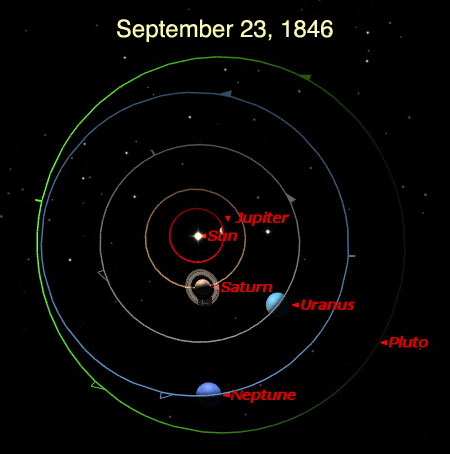
Now I just used the word "theory". "Theory" in the scientific use of the word is different than the everyday language usage today. Most people today use "theory" as just a hunch, guess, belief, or proposal. Science uses the original meaning of "theory": a logical, systematic set of principles or explanation that has been verified—has stood up against attempts to prove it false. In my astronomy class, students learn about how Newton's theory of gravity explains the motions of falling objects on the Earth and the motions of objects orbiting each other and we also dabble a little in Einstein's theory of General Relativity to understand what happens with black holes and the development, the evolution, of the universe. Astronomy students also learn about the atomic theory and how it explains the type of light we see from objects and what we see when we spread that light out into its rainbow of colors. Physics and chemistry students learn those theories too and how those theories explain other observations. Since I'm an astronomer, I hope you'll understand if I toot astronomy's horn: astronomers have been able to verify that nature uses the same rules or laws everywhere in the universe and since it takes light a long time to travel the great distances, astronomers have verified that nature has used the same rules or laws throughout its entire history. Another thing astronomers have discovered is that the universe has changed, or evolved, throughout time, just as geologists have discovered that the Earth has changed, or evolved, throughout its history.
A few more notes about scientific theories. A scientific theory must make testable or refutable predictions of what should happen or be seen under a given set of new, independent, observing or analysis circumstances from the particular problem or observation the theory was originally designed to explain. For example, the seeming contradiction between Uranus' predicted position from Newton's celestial mechanics was explained by the presence of a previously unknown planet, Neptune, whose position was predicted from Newton's celestial mechanics. Astronomers found Neptune just where the theory said it should be. Newton's theory was not originally developed to explain Uranus' or Neptune's motions and it was tested via telescopic observations.

Figure caption: Planet Neptune's inferred presence from Uranus' peculiar lagging and confirmation via telescope observation right where application of Newton celestial mechanics (gravity) theory said it should be.
Another example is the use of evolutionary theory to explain why the island of Madagascar hosts a peculiar group of primitive mammals called tenrecs. The theory makes claims such as an increasing separation of Madagascar from the rest of Africa, that the tenrecs would have been able to raft across the once much narrower channel between the island and the continent but the present channel is too wide for more advanced mammals to cross, and that the tenrecs should be much more alike each other than they are like other mammals both anatomically and even at the protein structure level. (see Kitcher p. 51-2) These claims can be tested via geology and other parts of biology independent of evolutionary theory.

Figure caption: the island Madagascar is off the south-east coast of the continent of Africa.
Figure caption: Tenrecs morphologically and ecologically resemble hedgehogs, shrews, opossums, mice, & otters.
A successful scientific theory will also be a unified theory, solving problems by using the same pattern of reasoning or problem-solving strategy again and again (Kitcher p. 46). In my astronomy class, students see that Newton's theories are applied in the same way to explain the motions and features of a wide variety of celestial objects and physics students use them to understand an even wider range of phenomena. (see Kitcher p. 46-47) We can use the construction of Darwinian histories of evolutionary theory to describe the emergence of a particular trait in any organism or the relationships among groups of organisms. Using the same problem-solving strategy, evolutionary theory can also "explain why we find contemporary organisms where we do by following the course of their historical modifications and migrations" (called "biogeography", Kitcher p. 50). The problem-solving strategy can also be used to answer questions of extinctions in the fossil record or our historical records by showing how the extinct organism's characteristics were no longer advantageous when the environment or competition changed.
Finally, a good or successful theory will also be fruitful in opening up new and profitable areas of research. Newton's theories led to improvements in our understanding of hydrodynamics, chemistry, optics, electricity and magnetism, thermodynamics, etc. "A flourishing science is incomplete… A good theory should be productive; it should raise new questions and presume that those questions can be answered without giving up its problem-solving strategies" (Kitcher p. 48). There were many questions Darwin and his contemporaries had but they trusted that future scientists would answer them in ways "consistent with the presuppositions of Darwinian histories" (Kitcher p. 53). Genetics now explains how new characteristics arise in populations and are inherited. Population genetics explains how variations in characteristics are maintained and how certain characteristics can be fixed. Ecologists can answer what interactions among populations of organisms affect the survival and fruitfulness of characteristics.
| Assumptions of Science | Theory + attributes | Methodological Materialism |
| Evolution via natural selection | Imago Dei | ID beliefs: God-action detection |
| Irreducible Complexity | Specified Complexity |